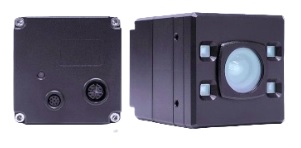The Lucid Vision Labs Helios2+ Time of Flight (ToF) 3D camera features High Dynamic Range (HDR) mode, and High-Speed Time-of-Flight mode, and a Sony DepthSense™ IMX556PLR 1/2″ global shutter CMOS back-illuminated ToF sensor.

Do I need a Time of Flight (ToF) 3D camera? It depends. If you can achieve the desired outcome in 2D, by all means stay in 2D since the geometry is simpler as are the camera, lensing, lighting, and software requirements. But as discussed in “Types of 3D imaging systems – and benefits of Time of Flight (TOF)”, some applications can only be solved, or innovative offerings created, by working in a three dimensional space.
Robots doing pick-and-place, aerial drones, and patient monitoring are three examples, just to name diverse applications, that may require 3D ToF imaging. Some 3D systems use structured light or passive stereo approaches to build a 3D representation of the object space – but those approaches are often constrained to short working distances. ToF can be ideal for applications operating at working distances of 0.5m – 5m and beyond, with depth resolution requirements to 1 – 5mm.
Lucid Vision Labs has been a recognized leader in 3D ToF systems some time, and we are proud to represent their Helios2 and new Helios2+ cameras, the latter with high speed modes achieve frame rates of 100fps+.
Besides the high speed mode in the video above, another feature is High Dynamic Range mode, combining multiple exposures to provide accurate 3D depth information for high contrast, complex objects containing both highly reflective and low reflectivity objects. Sensing and depth measurement applications to sub-mm (< 1mm) precision. Click here to see examples and further details.
1st Vision’s sales engineers have over 100 years of combined experience to assist in your camera selection. With a large portfolio of lenses, cables, NIC card and industrial computers, we can provide a full vision solution!
